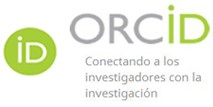The isotype as a teaching strategy to strengthen the cultural identity of high school students
DOI:
https://doi.org/10.62697/rmiie.v4i1.123Keywords:
Isotype, identity, culture, students, belongingAbstract
The isotype has a deep semantic value, since it reinforces the identity of a culture by allowing a deeper understanding of its evolution over time. Their ability to reflect and transmit the essence and character of those who adopt it in its various forms of expression and social manifestation is fundamental; in the educational context, isotype play a crucial role in strengthening the cultural identity of students. An isotype not only represents an image, but also acts as a bridge that connects students to their shared roots and values. By integrating into school life, a logo fosters a sense of belonging, motivating students to embrace and celebrate their culture in a conscious and proud way, thus contributing to the development of a cohesive educational community enriched by cultural diversity. This article contains information and contemplates an analysis of the importance of symbols, signs and graphics throughout history and how this influence cultural identity and generate a sense of belonging.º
Downloads
References
Álvarez, R. & Chamorro, D. (2017), Estrategias didácticas para la incorporación del diseño universal para el aprendizaje en la escuela rural, Panorama, 11(21), 69-81. https://lc.cx/2XLa1W
Aronson, E. (2002). Building Empathy, Compassion, and Achievement in the Jigsaw Classroom. En, J. Aronson, Improving Academic Achievement: Impact of Psychological Factors on Education. (pp. 209-225). Academic Press.
Björgvinsson, E., Ehn, P., & Hillgren, P. A. (2012). "Design Things and Design Thinking: Contemporary Participatory Design Challenges". Design Issues, 28(3), 101-116. https://doi.org/10.1162/DESI_a_00165
Banks, J. A. (2001). Cultural Diversity and Education: Foundations, Curriculum, and Teaching. Allyn & Bacon.
Camus, K., Schult, N., Sotillo, P., & Benites, R. (2022). Plataforma Moodle, como herramienta digital para la comunicación intercultural de estudiantes de beca 18. Horizontes. Revista De Investigación En Ciencias De La Educación, 6(26), 2062–2077. https://doi.org/10.33996/revistahorizontes.v6i26.474
Gay, G. (2010). Culturally Responsive Teaching: Theory, Research, and Practice. Teachers College Press.
González, S., & Triviño, M. (2018). Las estrategias didácticas en la práctica docente universitaria. Profesorado, Revista De Currículum Y Formación Del Profesorado, 22(2), 371–388. https://doi.org/10.30827/profesorado.v22i2.7728
Herrera, C., & Villafuerte, C. (2023). Estrategias didácticas en la educacion. Horizontes Revista de Investigación en Ciencias de la Educación, 7(28), 758-772. https://doi.org/10.33996/revistahorizontes.v7i28.552
Reyes, G. (2021). El aprendizaje significativo como estrategia didáctica para la enseñanza–aprendizaje. Polo del Conocimiento, 6(5), 75-86. https://lc.cx/f6Cfld
Sanders, E., & Stappers, P. J. (2008). Co-creation and the new landscapes of design. CoDesign, 4(1), 5-18. https://doi.org/10.1080/15710880701875068
Unidad Educativa Ángel Polibio Chaves de la ciudad de Guaranda. (2024). https://ueapch.net/
Vilchez, J., & Ramón, J. (2022). Enseñanza flexible y aprendizaje de la matemática en educación secundaria rural. Edutec, Revista Electrónica De Tecnología Educativa, (80). https://doi.org/10.21556/edutec.2022.80.2431
Villacis, X., & Vigoa, Y. (2023). Constructivismo en el aprendizaje: algunas consideraciones teóricas desde la comunicación. Revista Científica Arbitrada Multidisciplinaria Pentaciencias, 5(6), 124–132. https://doi.org/10.59169/pentaciencias.v5i6.847
Zambrano-Solórzano, L., Vélez-Loor, J., & Zambrano-Acosta, J. (2022). Gamificación como estrategia didáctica para el desarrollo del aprendizaje significativo en estudiantes de educación inicial. MQRInvestigar, 6(4), 24–45. https://doi.org/10.56048/MQR20225.6.4.2022.24-45
Downloads
Published
How to Cite
Issue
Section
License
Copyright (c) 2025 Patricio Daniel Vásconez-Barragán, Santiago Arturo Moscoso-Bernal

This work is licensed under a Creative Commons Attribution-NonCommercial-ShareAlike 4.0 International License.
Authors who publish in Revista Mexicana de Investigación e Intervención Educativa (RMIIE), of Universidad Pablo Latapí Sarre agree to the following terms:
1. Copyright
Authors retain unrestricted copyright to their work. Authors grant the journal the right of first publication. To this end, they assign the journal non-exclusive exploitation rights (reproduction, distribution, public communication, and transformation). Authors may enter into additional agreements for the non-exclusive distribution of the version of the work published in the journal, provided that acknowledgment of its initial publication in this journal is given.
© The authors.
2. License
The articles are published in the journal under the Creative Commons Attribution-NonCommercial-ShareAlike 4.0 International License (CC BY-NC-SA 4.0). The terms can be found at: https://creativecommons.org/licenses/by-nc-sa/4.0/deed.en
This license allows:
- Sharing: Copying and redistributing the material in any medium or format.
- Adapting: Remixing, transforming, and building upon the material.
Under the following terms:
- Attribution: You must give appropriate credit, provide a link to the license, and indicate if any changes were made. You may do this in any reasonable manner, but not in any way that suggests the licensor endorses or sponsors your use.
- NonCommercial: You may not use the material for commercial purposes.
- ShareAlike: If you remix, transform, or build upon the material, you must distribute your creation under the same license as the original work.
There are no additional restrictions. You may not apply legal terms or technological measures that legally restrict others from doing anything the license permits.












